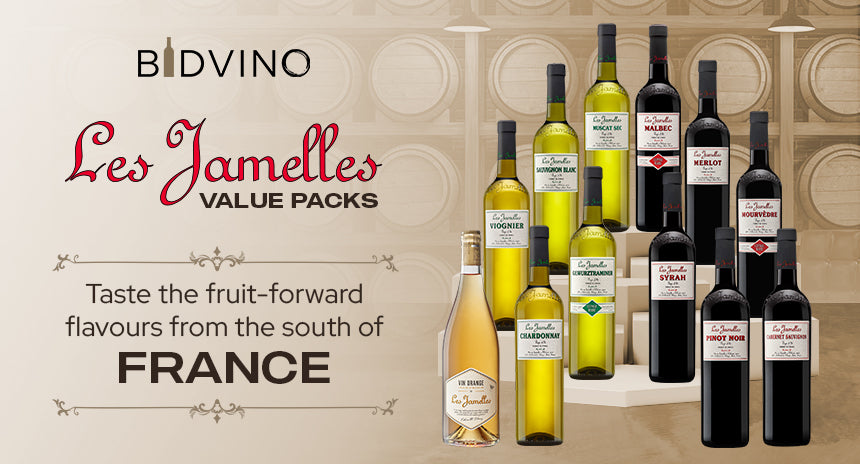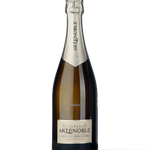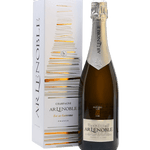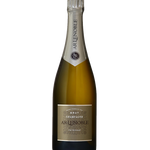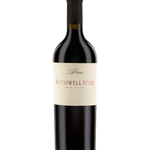Red wine is not just about its taste and texture; one of the most essential components that influence the drinking experience is its alcohol content. Whether you’re a casual wine drinker or a wine enthusiast, understanding the alcohol percentage (ABV) in red wine can help you select the perfect bottle to suit your personal preferences or match the occasion.
In this article, we’ll explore the various factors that affect the alcohol content of red wine, explain the typical ranges of ABV you can expect in different types of red wines, and offer guidance on how alcohol content influences the flavor and body of wine.
By the end, you’ll have a solid understanding of red wine alcohol percentage and how to choose the best red wine for your needs.
What is Red Wine Alcohol Percentage?
The alcohol by volume (ABV) in wine refers to the percentage of alcohol present in the liquid. Essentially, it indicates how much of the wine is made up of pure alcohol. This percentage is typically printed on the label of a wine bottle, giving consumers an idea of the wine's strength.
Red wines typically range in alcohol content from 12% to 15% ABV, although some wines may fall outside this range, especially when influenced by factors such as climate, grape variety, and winemaking techniques.
The ABV of a wine has a direct impact on its flavor profile and mouthfeel. Generally, higher alcohol wines tend to have a fuller body, richer texture, and more pronounced warmth in the mouth, while wines with lower ABV tend to be lighter and crisper.
How Is Alcohol Percentage Determined in Red Wine?
Several factors influence the alcohol content of red wine. These include:
1. Grape Variety:
Different grape varieties naturally have different sugar levels, and the amount of sugar present in the grapes will directly influence the alcohol content of the wine. Grapes with higher sugar content will typically produce wines with higher alcohol levels after fermentation.
For example, Zinfandel, Syrah, and Shiraz grapes tend to have higher sugar content and, consequently, higher alcohol levels. On the other hand, grape varieties like Pinot Noir and Gamay generally have lower sugar content, resulting in wines with lower ABV.
2. Climate:
The climate in which the grapes are grown plays a significant role in their sugar levels. Grapes grown in warmer climates have a longer growing season, which allows them to ripen more fully, absorbing more sugar. This increased sugar content leads to a higher alcohol percentage in the finished wine.
For instance, California and Australia are known for producing wines with higher alcohol content, particularly in varieties like Cabernet Sauvignon and Shiraz, due to their warm climates. Meanwhile, cooler regions such as Oregon and France’s Burgundy region tend to produce wines with lower alcohol content.
3. Winemaking Techniques:
Winemakers have control over how much alcohol is in their wines through fermentation techniques. If fermentation is allowed to continue for a longer period, more sugar will be converted into alcohol, resulting in higher ABV. Winemakers can also choose to stop fermentation early, preserving residual sugar, which leads to a lower alcohol content.

The Average Range of Red Wine Alcohol Percentage
The average alcohol content for red wines typically falls within the 12% to 15% ABV range, though there can be significant variations within this range. Let’s break it down further by looking at various categories of red wines:
Light-Bodied Red Wines (12% - 13.5% ABV)
Light-bodied red wines are characterized by their smooth, delicate flavors and higher acidity. These wines are generally lower in alcohol content, with an ABV ranging from 12% to 13.5%.
-
Pinot Noir: One of the most popular light-bodied red wines, Pinot Noir typically has an ABV between 12% and 13.5%. It’s known for its smooth texture, high acidity, and flavors of cherry, raspberry, and earthy undertones.
-
Beaujolais: A wine made from the Gamay grape, Beaujolais is another light red wine with an ABV of around 12%. It is often fruity and fresh, with flavors of red fruit, pomegranate, violet, peony, and even some banana sometimes for Beaujolais-Nouveau.
Medium-Bodied Red Wines (13% - 14% ABV)
Medium-bodied red wines offer a balance of acidity, alcohol, and fruit flavors. They typically fall in the 13% to 14% ABV range.
-
Merlot: This is one of the most common red wines, with an ABV typically between 13% and 14%. It’s smooth and approachable, with flavors of plum, black cherry, and chocolate.
-
Grenache: Grenache is another medium-bodied wine that typically has an ABV of 13.5% to 14%. It often makes flavourful red wines, with notes of red fruits, grilled plum, leather, or dried herbs. It often makes flavorful red wines, with notes of red fruits, grilled plum, leather, or dried herbs
Full-Bodied Red Wines (14.5% - 15% ABV and higher)
Full-bodied red wines have a rich, intense flavor and higher alcohol content. These wines tend to have ABVs of 14.5% and above.
-
Cabernet Sauvignon: One of the most famous red wines, Cabernet Sauvignon typically has an ABV of 14.5% to 15%. It is known for its bold flavors of black currant, cedar, baking spice and tobacco, often with a dry, tannic finish.
-
Shiraz/Syrah: Syrah (or Shiraz, depending on the region) is a full-bodied wine that can have an ABV as high as 15%. It is rich, powerful, sometimes meaty red wines, with flavours of blueberry, black plum, pepper, chocolate, and tobacco notes.
Fortified Red Wines: Higher Alcohol Content
Some red wines are fortified, meaning that distilled spirits (usually brandy) are added during the fermentation process to boost alcohol content. These wines typically have higher ABVs, ranging from 16% to 20%.
-
Port Wine: A popular fortified wine, Port typically has an ABV of 16% to 20%. There are several styles of Port, some sweeter than others. It can display flavours of raspberry, blackberry, caramel, cinnamon, even chocolate sauce or more subtle flavours of graphite, hazelnut, almond or butterscotch.
-
Madeira: Madeira is a fortified wine from the Portuguese island of the same name, with an alcohol content of 17–20%. Off-dry to sweet in style, it is oxidized and valued for its remarkable ability to age over 100 years. Known for its high acidity, it often shows complex flavors of burnt caramel, walnut oil, peach, hazelnut, and orange peel.
How to Choose Red Wine Based on Alcohol Content?
When selecting a red wine, it’s essential to consider the alcohol content to match your personal preferences and the type of meal you plan to pair it with. Here are some tips:
-
Lighter, Refreshing Wines: If you prefer a lighter, crisper red, choose wines with an ABV around 12–13%. Pinot Noir is versatile — light enough for fish yet complex enough for richer meats like duck, with acidity that cuts through fat and gamey flavors. Spicy dishes also bring out its nuanced character. Gamay, as in Beaujolais, pairs effortlessly with a range of foods, from sweet-and-sour salmon and beef stroganoff to lighter fare like salads.
-
Balanced, Everyday Wines: For wines with a balanced profile, choose reds with an ABV between 13% and 14%. Merlot and Grenache are excellent options for daily drinking, pairing well with a wide variety of foods, from pasta to grilled meats.
-
Bold, Full-Flavored Wines: If you enjoy rich, full-bodied wines, go for red wines with an ABV of 14.5% or higher. Wines like Cabernet Sauvignon and Shiraz are perfect for special occasions or when pairing with grilled meats, rich sauces, and dishes with intense flavor.

Does Alcohol Content Affect the Taste of Red Wine?
Yes, alcohol content plays a significant role in the flavor profile of red wine. Higher alcohol content tends to add warmth and a fuller body to the wine. This can result in a smoother texture and more intense, bolder flavors. On the other hand, wines with lower alcohol content tend to have a lighter, crisper mouthfeel with more emphasis on acidity and fruitiness.
Wines with a higher ABV may also have a more pronounced alcoholic burn, especially when consumed in larger quantities, while lower-alcohol wines are often more refreshing and less overpowering.
How to Reduce Alcohol Content in Wine?
If you prefer wines with lower alcohol content, there are several ways to choose wines with reduced ABV:
-
Look for wines from cooler climates: Wines made from grapes grown in cooler regions often have lower alcohol content due to the shorter growing seasons. Wines from areas like Oregon, Burgundy, or New Zealand tend to have lower ABVs.
-
Choose lighter wine styles: Light-bodied reds, such as Pinot Noir or Beaujolais, are naturally lower in alcohol compared to full-bodied wines like Cabernet Sauvignon or Syrah.
-
Check the label: Wine labels typically indicate the ABV. Look for wines with an ABV in the lower range if you’re aiming to reduce alcohol intake.
Conclusion
Understanding red wine alcohol percentage is key to selecting the right wine for your taste and health preferences. Whether you prefer a lighter, crisper wine or a bold, full-bodied option, the ABV plays a significant role in how the wine tastes and feels.
Remember that moderate consumption is always essential to enjoying wine responsibly. By considering factors such as grape variety, climate, and personal preference, you can choose a wine with the right alcohol content to suit your occasion, meal, and taste preferences.
Frequently Asked Questions About Red Wine Alcohol Content
1. How does alcohol content affect the taste of red wine?
Higher alcohol content generally contributes to a fuller body, richer flavor, and a warming sensation in the mouth. Lower alcohol content wines tend to be crisper, lighter, and more refreshing.
2. Is red wine with a higher alcohol content better than one with a lower ABV?
Not necessarily. It depends on your preferences. Wines with higher ABV tend to be fuller and more intense, while lower ABV wines are lighter and more refreshing. Choose based on your taste and pairing preferences.
3. What is the alcohol content of red wine compared to other alcoholic drinks?
Red wine typically has an alcohol content of 12% to 15% ABV, which is generally lower than spirits (vodka, whiskey) but higher than beer, which typically ranges from 4% to 6% ABV.
4. Can I reduce the alcohol content in red wine?
You can't change the alcohol content of bottled wine, but you can choose wines with lower ABV by selecting lighter styles or wines from cooler climates.
